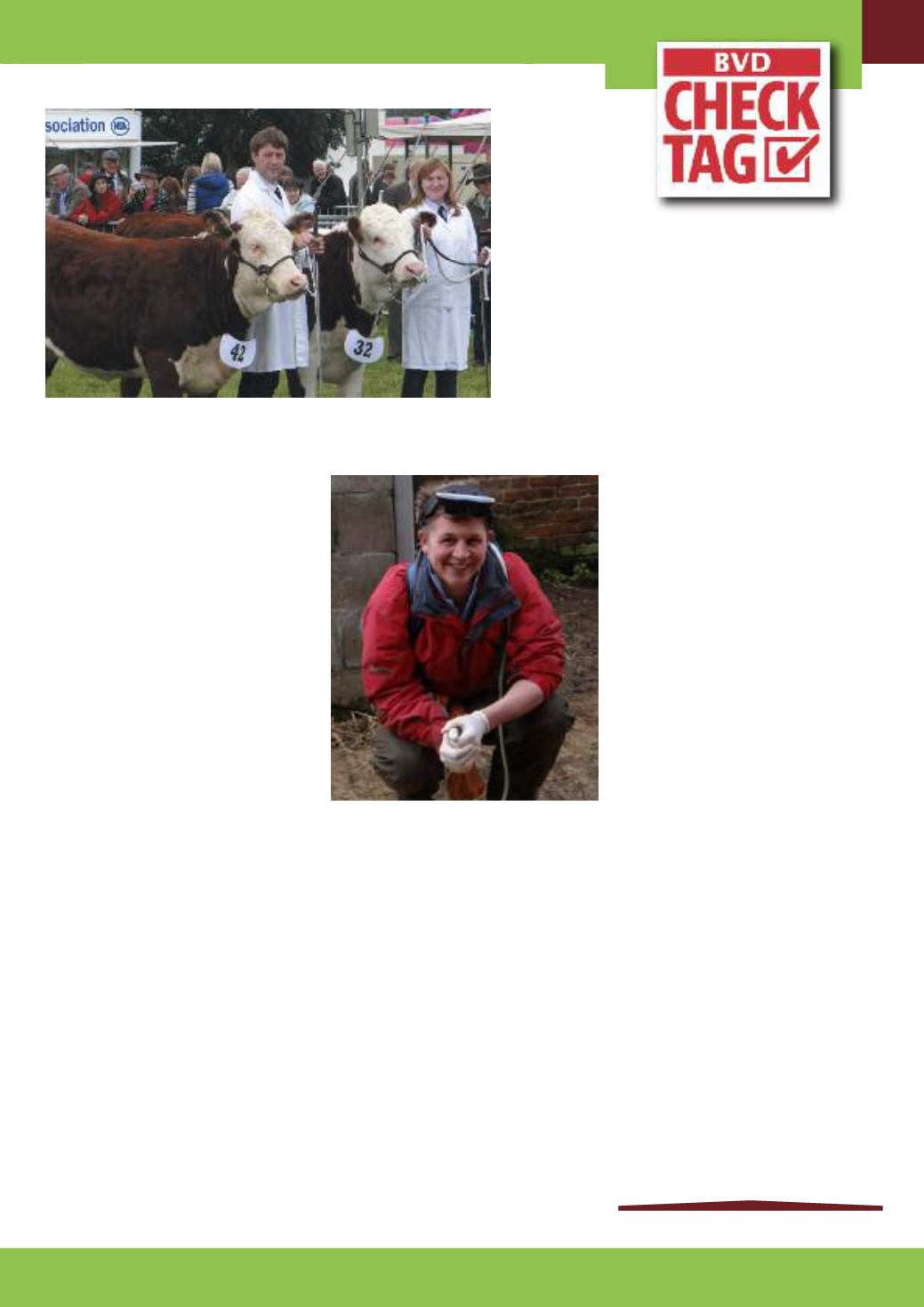
LIVESTOCK MATTERS - BVD SUPPLEMENT
cattle meant the risk of BVD exposure
on the home farm was low.
However bought-in cattle and regular
involvement on the show circuit were
identified as the main risk factors for
introducing BVD into the herd. As a
result, the farm has adopted a strict
testing and quarantine regime.
Philip says showing is one of the best
ways of marketing their stock, but it is
crucial that moving stock on and off
farm doesn’t decrease the value of the
herd by bringing back disease.
“There is a risk to showing our best
animals, but there is also a big benefit.
We select about 3-4 animals a year for
the summer show circuit and isolate
them from the rest of the herd as soon
as they come back from their first
show,” he explains.
At the shows, the Vincents are also
careful to avoid nose-to-nose contact
between animals. Boots are also
disinfected as soon as they return home
and all show equipment is kept separate.
The show team are then blood tested
for BVD and other disease exposure
four weeks after the last show and
will only return to the main herd after
receiving a clear test. Calves entering
the winter show circuit will also be
treated in the same way.
All show animals are also vaccinated for
BVD and IBR. The Vincents have chosen
not to vaccinate the rest of the herd so
as to provide greater flexibility for
purchasers. As a result, close
monitoring is even more crucial
to ensure animals are protected
from infection.
“When we’re buying-in stock, we have
a preference for sourcing animals from
herds in an accreditation scheme, but
even when we’re buying from an
accredited herd, we always double
test for BVD - we don’t want to do
anything to risk our status,”
explains Laura.
Steve explains how animals should
ideally be tested for BVD virus before
they arrive on farm and again 3-4
weeks later when still in quarantine.
This will help identify PI animals and
those which have just been exposed
to the disease.
A PI animal is produced when a cow is
exposed to the BVD virus during the
first 120 days of pregnancy. The calf is
unable to mount an immune response
and thinks the virus is part of its body.
It is then born carrying and shedding
the virus and is termed “Persistently
Infected” or a PI. These PIs are one of
the main routes of disease spread.
If an animal has recently been in
contact with a PI, you will find virus in
the blood stream. Then after three
weeks you will typically see BVD
antibodies instead. If the animal is an
actual PI itself, the two tests will
typically come back positive for virus.
So far, White House Farm’s vigorous
testing of show animals and bought in
stock has never identified a PI.
However, Laura and Philip believe the
strategy is crucial to safeguard their
herd and help them achieve BVD
free status.
Due to changing the provider of the
accreditation scheme, there has been a
delay in the herd being certified as BVD
free. To be accredited free the herd
needs two clear youngstock BVD tests,
12 months apart. They received one
clear test in October 2013, and with a
second this October also clear, Steve,
Philip and Laura can strengthen their
already positive marketing message.
Find out more at
Steve Trickey of ChapelField Vets
recommended a total biosecurity
package for White House Farm
Philip and Laura Vincent with two of their show cattle.


